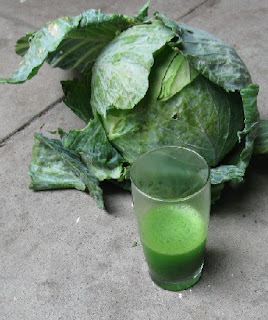When we eat meat, we have the responsibility to demand to know how our food lived and died.
When we eat meat, we partake in the cruelty of this world.
When we support an action or tradition, we may as well be the ones who killed.
A food blog for people who do not like to eat animals.

Please note that I am not going to write about citrus squeezers which are also referred to as juicers.
People often get confused about the difference between a juicer and a blender.
One would put fluid-like or mushy food into a blender (Not a juicer). If the food is too dry some extra fluid needs to be added.
A blender simply mashes and chops everything up into a pulp depending on what you put into it.
A juicer on the other hand will remove the fluid from the food so that you can drink it.
It may be a good idea to do some research on the various types of juicers before buying one.
Personally it does not worry me too much, because I only put edible stuff in my juicer;
What it does not turn into juice, I eat for extra fiber in my diet. Nothing gets wasted.
Some juicers are easier to clean than other, but not much. Some of the juicers that brag about separating the pulp into its own little compartment only have an extra part to clean in the end. You will need to remove the blades and strainer to clean it before you store it again, anyway.
Mushy stuff does not go into a juicer (food hat can be mashed with a fork) like banana or avocado. You will not get any juice out of them. It is better to use your blender for mushy stuff. You can add a little milk, cream, ice-cream, yogurt or water to it if you want to drink it.
If you are going to do a lot of juicing perhaps you need to look at the bigger, stronger models. Find out for how long it is guaranteed. Perhaps that is an indication of how soon you may be experiencing problems.
I still have some research to do on juicers. I have only tested two models so far and both were middle of the range ones. It is my intention to contact some suppliers and find out if they want me to test some of their appliances. It is just a thought. I am not sure if I am going to do it.
I bought my first juicer twenty years ago and it is still going well. Yes, I have two juicers because Hubby bought me another juicer to replace my blender; that is why I decided to write about the different appliances. The fact that my juicer is over twenty years old is possibly an indication of how often I juice things.
One of my friends still had pitch black hair at the age sixty four. When I last saw her she was seeking medical advice to lower her libido. She used to juice a selection of herbs and vegetables from her garden every day and she kept her yogurt jar in the fridge door. When she only had a tablespoon of yoghurt left, she just filled her yogurt jar with fresh milk and put it into the yogurt maker overnight. She always had honey and nuts at hand, which she purchased from the local market. You guessed, she is vegetarian.
Carrot and apple juice are two juicing favorites. Just remember that people who eat too many carrots turn yellow. That’s true. You can tell some of the health fanatics by their hollow eyes and yellow skins. One needs a balance in whatever one does; Even eating healthy. I have seen more than one fruitarian turning completely bananas.
I do not worry about the taste of the juice I make. I just drink it down for health then savor the pulp by mixing it with yogurt, honey, nuts or muesli or something nice.
Some foods that can be juiced raw are:
Fruit:
Any salad vegetables can be used: (Just put the parts of the food you like to eat into the juicer)
In other words use any raw salad herbs and vegetables.
Cooked and mushy foods are blended rather than juiced. (Use your blender and not your juicer)
Skins and pips you do not use can go into the compost. Perhaps I shall post about compost making at a later date.
Remember if you are not going to eat the pulp, you do not have to remove the skins from most fruit or vegetables unless it is bitter.
If you want to make nice juices, here are some recipes:


